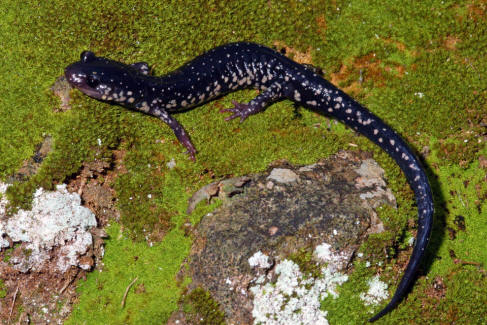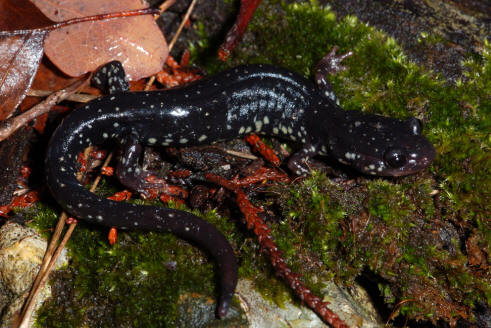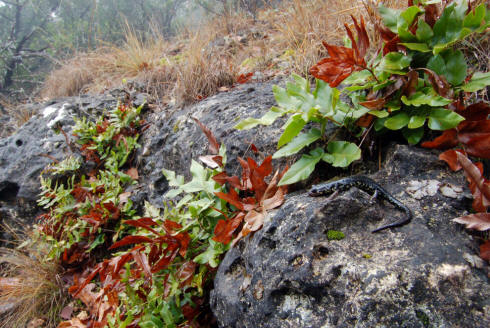

Habitat: these salamanders are restricted to north facing slopes in sheltered canyons. Look for the presence of ferns, mosses, and brushy bluestem grasses. They occur commonly on wet road-cuts, where they inhabit rock crevices. Most of their lives are spent in crevices and underground, and they are surface active mostly in the winter and early spring. During the day, they may be found under the shelter of rocks and logs. They retreat to the security of moist crevices during the hot dry summers.

Distribution: these salamanders reach the western limit of their distribution in the Nueces Canyon. They are primarily found in the northern portions of the canyon, from Camp Wood north, although they may occur in suitable habitat anywhere in the canyon. Populations of these salamanders have only been recently verified for the Nueces Canyon, and their distribution here remains poorly understood.
Abundance: these salamanders can be quite common when conditions are suitably wet. We have found as many as 22 in a few hours of searching roadside habitat here in the canyon.
Conservation Status: although these salamanders are at the western end of their Texas distribution, they are not threatened and their status is secure.
Comments: recent genetic research into the evolutionary relationships of Texas populations of Slimy Salamanders may result in taxonomic changes